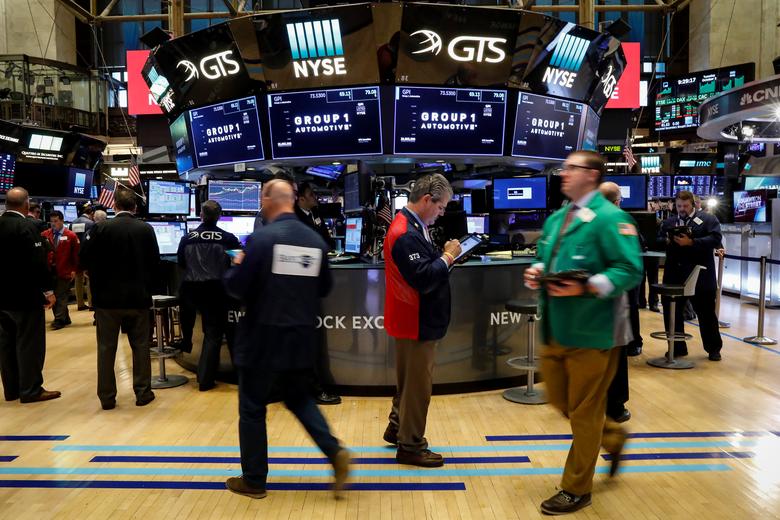
A gauge of equities around the world fell on Monday and oil prices plunged as concerns about a new coronavirus strain in Britain overshadowed optimism over a vaccine-fueled rebound in economic growth.
U.S. stocks, however, trimmed their losses as investors also weighed the benefits of a $900 billion fiscal stimulus deal reached by Congress over the weekend. The benchmark S&P 500 was down only slightly after having fallen as much 2% earlier.
Financial stocks also helped cap broader losses, rallying more than 1% after the Federal Reserve said the largest U.S. banks could resume stock buybacks.
The dollar index, which had risen earlier in the session as investors sought refuge in the greenback, gave up its gains and was last 0.28% lower.
“The initial sell-off was a knee-jerk reaction to the news we saw in the UK,” said Keith Lerner, chief market strategist at Truist Advisory Services in Atlanta. “As the day goes on, people are starting to sift through what’s in the fiscal package. In our view, it’s underappreciated.”
Still, MSCI’s gauge of stocks across the globe declined 0.63%.
The new coronavirus strain, said to be up to 70% more transmissible than the original, has put some 16 million Britons under tougher lockdowns and prompted several countries to shut their borders to the UK.
Worries over the new strain sent European stocks plunging. The pan-European STOXX index ended 2.3% lower.
In both Europe and the United States, travel and leisure stocks, which had been expected to be among the biggest beneficiaries of an economic reopening, fell.
The British pound also tumbled on virus concerns, as well as the lack of a post-Brexit trade deal ahead of a Dec. 31 deadline. It was last down 0.27% at $1.3482.
The euro traded slightly lower, too, down 0.07% to $1.2246.
Meanwhile, commodities that had been expected to benefit from a growth upswing next year plunged.
Both Brent and U.S. crude dropped nearly 3% while copper fell off the $8,000-per-tonne mark it recently scaled for the first time since 2013.
Even so, Emiel van den Heiligenberg, head of asset allocation at Legal & General Investment Management, said expected vaccine rollouts would limit broad market downside.
“A correction is justified but a very strong sell-off would surprise us... because of the vaccine, by next March-April, we should be able to think about normalization again,” he said.
On Wall Street, the Dow Jones Industrial Average rose 92.77 points, or 0.31%, to 30,271.82, the S&P 500 lost 10.69 points, or 0.29%, to 3,698.72 and the Nasdaq Composite dropped 16.02 points, or 0.13%, to 12,739.62.
Volatility in U.S. equities jumped as the indexes swooned. Though well off its highs in afternoon trading, the Cboe Volatility Index, known as Wall Street’s “fear gauge,” was still on track for its largest one-day gain since late October.
Safe-haven assets such as German and U.S. government bonds also rose early on Monday, though Treasury yields, which move inversely to prices, later pared losses.
Benchmark 10-year Treasury notes were flat to yield 0.9479%.
However, gold, which usually rises during times of turmoil, fell on Monday. It was last down 0.2% to $1,876.61 an ounce after falling as much as 1.3% earlier in the session.
















COMMENTS
Comments are moderated and generally will be posted if they are on-topic and not abusive.
For more information, please see our Comments FAQ